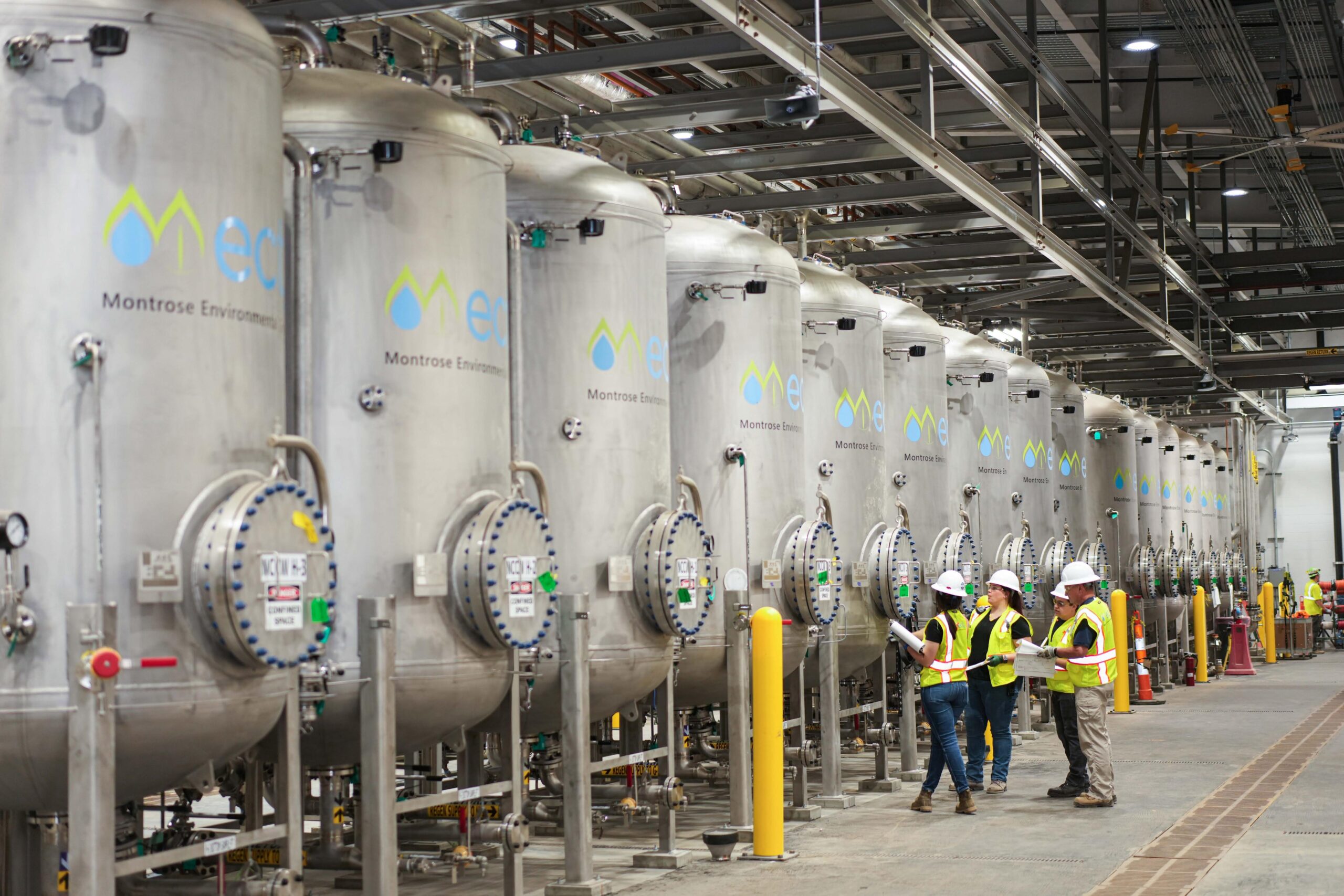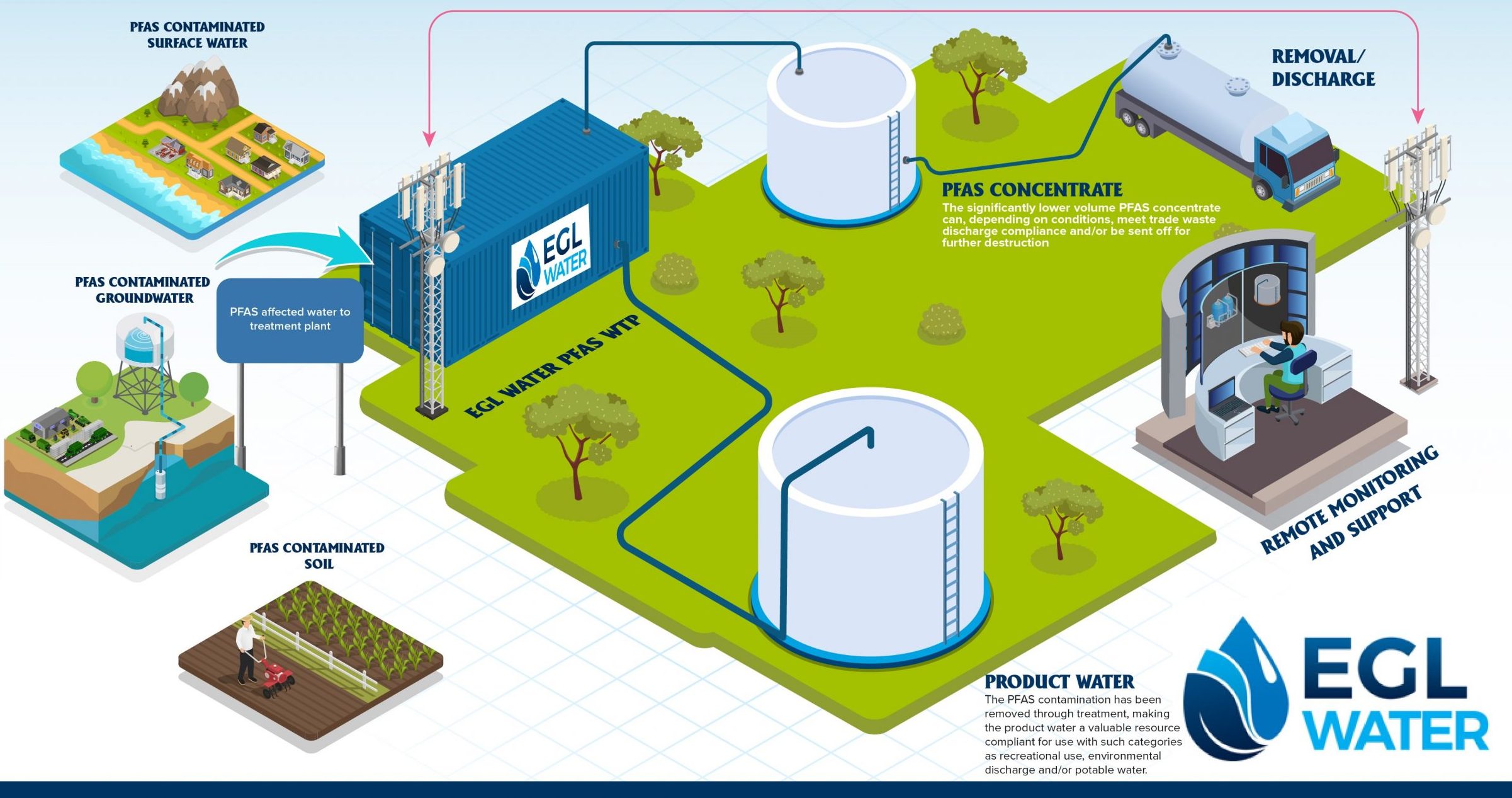Comprehensive PFAS Management in Agricultural Areas
Comprehensive PFAS Management in Agricultural Areas
Blog Article
Advanced Approaches for Reliable PFAS Contamination Elimination
The persistent obstacle of PFAS contamination demands the exploration of innovative elimination techniques that can efficiently address these dangerous substances. Ingenious innovations, such as sophisticated oxidation procedures and various adsorption methods, have actually emerged as appealing options in mitigating PFAS from affected atmospheres.
Recognizing PFAS Characteristics
Although per- and polyfluoroalkyl compounds (PFAS) have actually been commonly used in various commercial and consumer products as a result of their one-of-a-kind buildings, their perseverance in the setting presents significant obstacles to public wellness and security. PFAS are a team of artificial chemicals identified by a carbon-fluorine bond, among the toughest chemical bonds known, which contributes to their outstanding stability and resistance to destruction. This security allows PFAS to build up in the atmosphere and living organisms, causing possible unfavorable wellness results.
The hydrophobic and oleophobic nature of PFAS makes them especially reliable in applications such as non-stick finishings, stain-resistant fabrics, and firefighting foams. These exact same buildings contribute to their environmental determination, as PFAS do not quickly damage down with natural procedures. Their widespread use has actually led to ubiquitous contamination of water sources and soils, complicating removal initiatives. Recognizing the chemical residential properties of PFAS is important for creating reliable techniques to take care of and mitigate their environmental influence. The one-of-a-kind features of these materials demand a nuanced technique to resolve the obstacles posed by their presence in ecosystems and potential human direct exposure.
Innovative Remediation Technologies
The determination of PFAS in the environment has actually stimulated the development of ingenious removal technologies aimed at effectively eliminating these contaminants from impacted ecosystems. Among one of the most appealing approaches are innovative oxidation processes (AOPs), which utilize powerful oxidants to break down PFAS substances into much less harmful compounds. AOPs can be customized to target particular PFAS frameworks, boosting their effectiveness.
One more emerging technology is the use of adsorption media, such as turned on carbon and ion exchange resins, which can precisely record PFAS from polluted water. These materials have revealed substantial elimination performances, although periodic replacement and regeneration are required to preserve performance.
Membrane purification strategies, consisting of reverse osmosis and nanofiltration, are additionally obtaining traction in PFAS remediation. These methods can successfully divide PFAS from water, offering a practical remedy for dealing with polluted sources. Furthermore, thermal treatment methods, such as incineration, can decay PFAS into non-toxic by-products, though they require cautious management to regulate discharges.
Jointly, these innovative remediation innovations stand for substantial innovations in the ongoing battle versus PFAS contamination, supplying different techniques to bring back affected environments and shield public health.

Bioremediation Methods
Bioremediation methods provide an encouraging technique to resolving PFAS contamination by taking advantage of the natural abilities of microbes to weaken these relentless compounds (m270 waste management). This technique entails making use of microorganisms, fungis, and various other microbes that can metabolize or transform PFAS compounds right into much less damaging results
Current advancements in molecular biology and environmental microbiology have enhanced our understanding of microbial communities and their potential roles in PFAS degradation. Scientists are actively discovering details stress of microorganisms, such as Pseudomonas and Bacillus, which have demonstrated the capacity to break down certain PFAS compounds.
Sitting bioremediation strategies, where bacteria are boosted directly in contaminated settings, can be particularly efficient. This technique typically entails the application of nutrients or electron contributors to promote microbial development and task. In addition, ex-spouse situ techniques, such as bioreactors, permit controlled problems that can optimize deterioration prices.
Despite the guarantee of bioremediation, obstacles remain, consisting of the intricate nature of PFAS compounds and the demand for substantial area screening - m270 waste management. Continued r & d will be important to refine these strategies and analyze their effectiveness in diverse ecological contexts
Adsorption and Filtering Techniques
Dealing with PFAS contamination often entails using adsorption and filtration methods, which are developed to eliminate these persistent chemicals from water and soil. Among the various techniques, turned on carbon adsorption is commonly made use of because of its high area and porosity, allowing effective capturing of PFAS particles. Granular activated carbon (GAC) systems are specifically preferred for dealing with big quantities of contaminated water, while powdered turned on carbon (SPECIAL-INTEREST GROUP) can be made use of for smaller-scale applications.
Ion exchange materials additionally show guarantee in PFAS removal, operating by exchanging PFAS ions with less dangerous additional info ions in the water. This method has demonstrated efficiency in focusing PFAS compounds, promoting their succeeding removal. Furthermore, membrane layer filtering methods, such as reverse osmosis and nanofiltration, run by making use of semi-permeable membrane layers to separate PFAS from water, successfully decreasing their concentrations.
While these approaches are effective, they must be meticulously chosen based on the specific PFAS substances present and the ecological context. Constant advancements in products science and engineering are leading to the advancement of novel adsorbents and filtering systems that improve removal effectiveness and minimize functional expenses, consequently enhancing total remediation initiatives.
Regulatory and Policy Considerations
Just how can effective regulatory frameworks enhance the administration of PFAS contamination? Extensive policies are necessary to make sure a worked with and robust action to the difficulties postured by per- and polyfluoroalkyl materials (PFAS) Regulations can establish clear guidelines for tracking, reporting, and remediating PFAS-contaminated sites, cultivating liability among markets and public entities. (m270 waste management)

In enhancement, monetary motivations and grants can be integrated right into policies to encourage the adoption of innovative remediation modern technologies. Policymakers need to additionally focus on research study and advancement, guaranteeing that emerging techniques for PFAS removal are validated and implemented properly.
Additionally, public awareness and engagement are essential components of any governing approach, equipping communities to promote for their health and wellness. Inevitably, a well-structured governing environment will certainly not only boost the management of PFAS contamination yet additionally promote lasting methods that safeguard future generations.
Verdict
In recap, the complexity of PFAS contamination requires the fostering of advanced removal methods. Ingenious innovations such as sophisticated oxidation procedures, adsorption techniques, and membrane layer filtering have demonstrated considerable effectiveness in removing these consistent substances from infected water resources. Additionally, governing structures have to advance to sustain the application of these innovations, making certain secure and efficient monitoring my blog of PFAS contaminants. Proceeded r & d in this area remain vital to attending to see here now the challenges posed by PFAS contamination.
Report this page